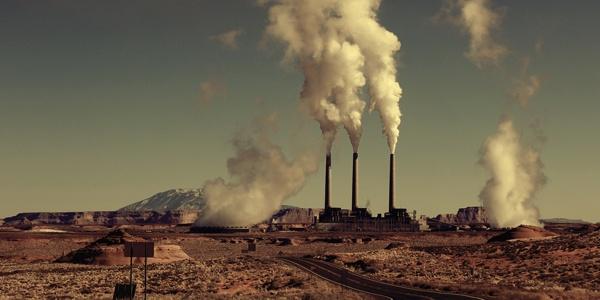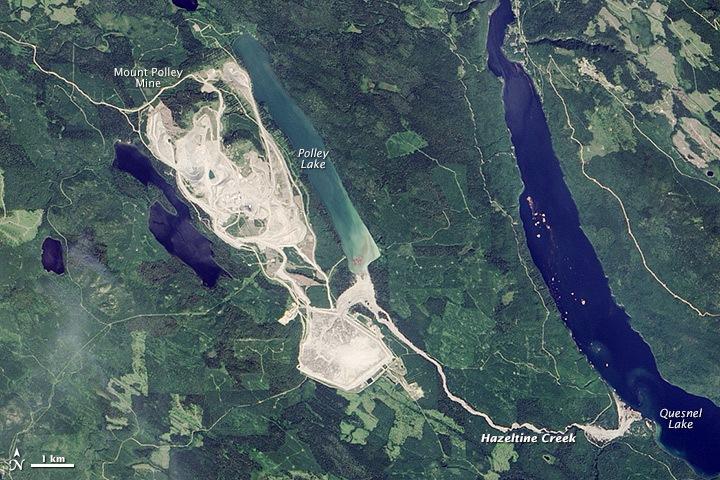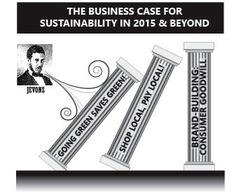Adidas races ahead on sustainable cotton target


German sportswear giant Adidas has sourced more than 30% of all its cotton sustainably, exceeding the originally planned 25% target. This marks the highest volume in sustainable cotton (aka 'Better Cotton') used in the company’s history.
The Better Cotton Initiative (BCI) aims to make global cotton production more sustainable. To do so, BCI works with organisations from across the cotton supply chain and interested stakeholders to address the negative social and environmental impacts of mainstream cotton farming, such as excessive pesticide and water use, while also promoting fair working conditions for the cotton farmers and their workers.
The Adidas Group has committed to source 100% of cotton across all product categories in all its brands as ‘sustainable cotton’ by 2018. The next target is to reach 40% Better Cotton by 2015.
The Better Cotton used in 2014 was predominantly sourced from farmers located in India, Pakistan and Brazil.
Picture credit: © Abrapa Brasil
One in five UK jobs pays under Living Wage rate


In some parts of Britain half the jobs are paying less than the living wage, the TUC has revealed at the start of the second week of its Fair Pay Fortnight.
TUC analysis of official figures from the House of Commons Library shows that one in five jobs in the UK pays under the living wage – currently set at £9.15 in London and £7.85 across the rest of Britain. But in some parliamentary constituencies more than half of the people working there earn less than this.
Across Great Britain, more than 5m people get paid less than the living wage. Birmingham Northfield tops the list of living wage blackspots with 53.4% of people working there earning less than £7.85 an hour, followed by Kingswood near Bristol (51%) and Dwyfor Meirionnydd in north Wales (50.9%).
For working women the picture is worse. Well over half of women working in Birmingham Northfield (63.1%), Kingswood (59.6%) and East Yorkshire (58.7%) take home less than the living wage.
TUC General Secretary Frances O'Grady said: “Extending the living wage is a vital step towards tackling the growing problem of in-work poverty across Britain.
“The number of living wage employers is growing rapidly and unions are playing their part in encouraging more employers to sign up and pay it. But we need to see a far wider commitment to pay the living wage from government, employers and modern wages councils – to drive up productivity and set higher minimum rates in industries where employers can afford to pay their staff more.”
PR Firm Edelman Ends Relationship with U.S. Oil Lobby


Edelman, the world’s largest public relations firm and arguably the force that has defined the global PR sector for years, will stop working with one of the most powerful business groups in the United States. According to the Holmes Report, Edelman has ended its relationship with the American Petroleum Institute (API).
Blue Advertising, a division of Edelman that had managed the relationship with API, will spin off from its parent firm and manage the account on its own. It is a gutsy business move for Edelman, on par with CVS deciding to stop selling tobacco products, since the Guardian has estimated that its relationship with API delivered as much as 10 percent of Edelman’s annual revenues. Meanwhile the firm developed a growing corporate social responsibility and sustainability practice, a profitable move considering more multinationals are cleaning up their supply chains while taking more action to address climate change. The result was the firm carrying on a balancing act of grooming its social responsibility practice while representing a controversial industry: a dance that was becoming more uncomfortable to watch over the past year.
Last year, several public relations firms declared they would no longer represent companies that denied humans’ impact on climate change. Edelman also announced it would no longer work with climate deniers. The problem was that the firm was still working with such organizations such as API (which doesn’t exactly technically deny man-made climate change but it’s not hard to read between the lines) and ALEC, industry groups that were fighting tooth and nail against any climate change campaign that would affect their member companies’ businesses. Hence Edelman continued to score plenty of criticism, all the while working with clients to make them more sustainable and responsible organizations. As someone who receives press releases faster than I can hit the delete key, I have to say an email from an Edelman rep almost always has substance—as one would expect from a firm that is top in its industry.
Meanwhile, the public relations field is growing, while more restrictive laws have led to a decrease in lobbying and the meltdown of traditional media companies is causing the journalism field to shrink. Some see this as a nefarious trend, and television shows such as Scandal help perpetuate the myth that the PR is nothing but a cynical industry that excessively hypes positive news—or creating spin when a client is in trouble. Such an assessment is shortsighted because a reputable firm such as Edelman also serves as a strategist and adviser: In this age where everyone is a blogger and can tweet in a heartbeat, there is too large of a global peanut gallery to simply “spin” a problem or hype a new “green” product or policy that is simply toothless.
But just as it made Olivia Pope queasy when she had to represent election-rigging Hollis Doyle, it is becoming more uncomfortable for any organization to maintain their relationships with the oil and gas industry. Universities are under pressure to divest their energy holdings, more stakeholders and shareholders are pressuring companies to clean up and green up their operations and investors want less to do with the energy sector. The pressure is everywhere, even in the art world, as in London, where activists pressured Tate Modern to publicly release its decades of funding from BP. So Edelman’s move may temporarily hurt them on the ledger, but in the long term, it should benefit its business as more organizations realize they need to become more responsible—but need assistance in delivering on such a plan.
Based in California, Leon Kaye is a business writer and strategic communications specialist. He has also been featured in The Guardian, Clean Technica, Sustainable Brands, Earth911, Inhabitat, Architect Magazine and Wired.com. When he has time, he shares his thoughts on his own site, GreenGoPost.com. Follow him on Twitter and Instagram.
Image credit: Edelman
BP: Put A Price on Carbon, Let The Market Cut Emissions


One of the world’s six major oil and gas companies supports a global price on carbon – and no, this is not an early April Fool’s joke.
In the latest version of its annual Energy Outlook report, BP recommends that governments set a meaningful global price on carbon emissions to level the playing field for businesses and let the market choose the best climate solutions.
The report, which analyzes long-term energy trends and makes projections for global energy markets over the next two decades, predicts global carbon emissions will jump 25 percent by 2035, climbing by 1 percent a year. This estimate is a cause for concern, putting greenhouse gases on a trajectory that is significantly – 18 billion tons of carbon, to be exact – above the path scientists advise to limit the global temperature increase to no more than 2 degrees Celsius above pre-industrial levels, the study notes.
BP says there is “no silver bullet” to slashing carbon emissions; rather, the company recommends that the public and private sectors pursue multiple initiatives and policies. But the bottom line: Government agencies should adopt a global price on carbon, though BP does not say whether it prefers this to take the form of a carbon tax or cap-and-trade system.
“The most likely path for carbon emissions, despite current government policies and intentions, does not appear sustainable,” says BP CEO Bob Dudley in an introductory letter to the 2015 Energy Outlook report. “…No single change or policy is likely to be sufficient on its own. And identifying in advance which changes are likely to be most effective is fraught with difficulty. This underpins the importance of policymakers taking steps that lead to a global price for carbon, which provides the right incentives for everyone to play their part.”
Global demand for energy will rise by 37 percent from 2013 to 2035 – an average of 1.4 percent per year – the report also predicts, mainly due to population growth and an increase in individuals’ income.
BP evaluates a host of potential carbon mitigation options in its report – from replacing coal with gas power to improving vehicle efficiency – and concludes that increasing energy efficiency across the economy will result in far greater emissions reductions than changing the fuel mix to cleaner-burning sources. The company’s line of business may bias them towards that deduction, but, as the oil giant itself says in the report, why not put a price on carbon and let each company identify the most efficient, cost-effective way to reduce the greatest amount of greenhouse gases?
While there is a growing number of companies and investors that support carbon pricing, it’s big news when an oil and gas company joins their ranks. ExxonMobile publicly backed a carbon tax in 2009, Grist reported, but went on to lobby against actual cap-and-trade legislation in Congress. And the Carbon Disclosure Project found that even when oil companies didn’t necessarily endorse a carbon tax, many were using carbon pricing estimates to plan for hypothetical future regulation in the U.S. – including Exxon, BP, ConocoPhillips, Chevron and Shell.
BP’s support of carbon pricing is promising – even if it just represents an oil giant caving in and accepting its regulatory future (well, we hope carbon pricing is in our regulatory future). But the question remains: If a cap-and-trade bill makes its way to Washington again, will the company that told us the effects of its 2010 Deepwater Horizon oil spill weren’t so bad advocate for a carbon pricing policy, or will it secretly work to undermine it?
Image credit: Flickr/Mike Mozart
Passionate about both writing and sustainability, Alexis Petru is freelance journalist and communications consultant based in the San Francisco Bay Area whose work has appeared on Earth911, Huffington Post and Patch.com. Prior to working as a writer, she coordinated environmental programs for Bay Area cities and counties. Connect with Alexis on Twitter at @alexispetru
Mount Polley Mine: 'Indigenous Law' Will Now Be Enforced


The negative effects of extractive industry operations on indigenous communities have been obvious for quite some time.
Studies show that the rights of Native communities are often at risk in such settings, especially when hydraulic fracturing and other crude oil-related developments are being operated on or near their lands.
What is often less reported however, are the dangers that Native peoples face from overlooked mechanical or structural failures where materials or waste compounds are stored in remote areas.
Images from NASA showcase the contaminated water that surged from the bright blue retention basin into nearby lakes when the mine collapsed.
Mount Polley: Canada's Worst Mining Spill
That danger was illumined in brutal clarity last August when a tailings pond in British Columbia, Canada failed, spewing 2.5 billion gallons of waste into nearby waterways. The Mount Polley Mine, located in B.C.'s vibrant Cariboo region sits amidst the province's Fraser River watershed, an essential resource not only to the Vancouver Mainland, but to the Neskonlith Indian Band and nearby towns of the Cariboo. First Nations communities along the Fraser River and its tributaries depend on the rivers and lakes for food, water and livelihood. In many cases, access and the right to manage those resources are protected by treaty or another type of agreement with the government. In this case, sovereign rights of the Secwepemc First Nation (Shuswap First Nation in English), which includes the Neskonlith band, are protected through a reconciliation agreement with the Province of British Columbia.
The spill, reported to be the largest industrial accident of its kind in Canadian history, flowed into nearby waterways, polluting Polley Lake and creating a four-month-long drinking ban for local communities. Cleanup was estimated to cost $200 million.
This January, the results of the first of three investigations into the spill was released. The fact that the spill was caused by a failure of the pond's earthen containment wall was visually evident from aerial photos. But the assessment of what caused the breach sent a chilling wake-up call to Native communities situated around North American ore mining sites.
"[The] dominant contribution to the failure resides in the design," said the three-expert panel charged with determining the reason for the breach. "The design did not take into
account the complexity of the sub-glacial and pre-glacial geological environment" below the dam, which breached when stresses underneath it changed. For unknown reasons, the structural design for the containment pond had been changed at the last minute to an option that appears to have been "flawed." The loading conditions of the pond didn't take into consideration geological factors that would be essential to the long-term integrity of the containment walls. When the wall collapsed, the breach was sudden and unstoppable, creating a swath of heavy metals, mud and debris that penetrated nearby water systems.
Even before the cause of the breach was known, Native communities in other parts of the province began to speak out against mining operations on their lands.
"The spill’s ramifications rippled to Imperial’s Red Chris mine in northern BC, where elders from the Tahltan Central Council (with whom the company previously had a positive working relationship) established a blockade to voice their concerns about the potential of a similar incident in their territories," stated First Peoples Worldwide in their Corporate Monitor post last September. In order to continue operations, the company was forced to sign an agreement that would allow third-party inspection of the operation under the band's auspices.
Similar concerns were voiced in other parts of western Canada as well. In July, just days before the dam broke, Toronto-based Seabridge Gold obtained environmental certificate for its $42 billion KSM mining operation at the northwest corner of B.C. Weeks later, with news of the breach still in international spotlight, KSM bowed to pressure to allow third-party oversight for the life of the operation. Geologic studies suggest that the area possesses the same sub-glacial mining risks as the Mount Polley mine.
New Mining Policies for First Nations' Lands
The provincial government has since delayed the release of the final report until 2017. The announcement, along with revelations of the avoidable cause of the breach, only heightened the frustration of Native communities in B.C.
Realizing that it would be essentially powerless to prevent any similar disasters without a conclusive report that could spur the industry and province into remedial action, the Secwepemc took what some might feel was a bold step: It invoked its rights as a sovereign First Nation of Canada and evicted Imperial Metals from its land. It also announced that it now had mining policies of its own, and would enforce from hereafter.
''One thing I want to make perfectly clear is this policy isn't a wish-list,'' said Jacinda Mack when the policies were announced. Mack serves as the the council coordinator for the Secwepemc Nation. "This is Indigenous law."
The 55-page document spells out in specific terms the responsibilities of the mining company and the rights of the First Nation to oversee and enforce those guidelines. It invokes the United Nations Declaration of Indigenous Rights to define the Native peoples' right to "determine and develop priorities and strategies for the development or use of their lands or territories and other resources." It also defines its right to close the mine and evict mining companies as it sees fit.
The policies were developed by a third party, the Fair Mining Collaborative, and is now available to all First Nation communities facing the question of mining on their lands.
"Indigenous rights can be defined as “flowing from Indigenous peoples’ historic and sacred relationship with their territories,” says Fair Mining Collaborative. "These rights are derived from Indigenous laws, cultural practices, customs, and forms of governance."
Chief Bev Sellars of the Soda Creek Band, which was affected by the tailings pond breach, explained the reason for the policies in more concrete terms. "Since mining arrived in BC First Nations have been ignored and imposed upon," she stated in an interview with Canadian publication The Tyee. "With this mining policy we can no longer be ignored or imposed upon, and the province and industry can no longer claim they do not know how to work with us ..."
Tailing Ponds Risks: A Worldwide Issue
According to studies released by the Center for Science in Public Participation and Earthworks, the conditions that affect the Mount Polley and KSM mining sites aren't limited to British Columbia.
"There are 839 tailings dams in the United States and approximately 3,500 around the world, according the U.S Army Corps of Engineers and the United Nations, respectively," the organizations announced in a press release in February. There is currently no international oversight of such mines.
There also aren't uniform laws protecting Aboriginal rights when it comes to mining operations. First Peoples Worldwide's 2014 study of extractive industry operations around the world last fall illumined numerous gaps in international policies when it came to indigenous communities and their rights to water, food and other resources when it comes to mining operations.
"Our Indigenous Rights Risk Report identified 73 mining projects on or near Indigenous Peoples lands globally, of which 17 are on or near Native American lands in the U.S.," said a spokeperson for First Peoples.
It is worth noting that while last fall's assessment of U.S. mining operations near or on Native American lands suggested that their residents experience less risk from mining operations than in Canada, Native American rights are not necessarily as far-reaching as in Canada. The path to nation sovereignty and community oversight of mining operations is often slower in the U.S., where some Native American populations are still battling the courts regarding environmental justice and climate justice issues.
Mount Polley: Climate Change?
There are numerous takeaway lessons that can be extracted from the Mount Polley catastrophe. While it is geographically more than a thousand miles from Alberta's Tar Sands, Mount Polley mirrors the very type of environmental disaster that ecologists feared would occur if the Embridge Pipeline were constructed across the watershed. The provincial government turned down the controversial oil pipeline two years earlier because it said it feared among other things, that the pipeline would put this breadbasket of resources at risk. It cited insufficient protections to ensure a spill of far-reaching potential wouldn't occur. The initial report on the Mount Polley disaster suggests that far-reaching environmental spills can still occur in industries that have prevailed for years and settings that are actively managed, just as they can miles of pipeline that cross desolate terrain.
One question that the report did not address is why there was a shifting of the sub-glacial formation. It is to be assumed that such change can occur over years as a part of the natural ecology of the area, but was this unexpected shift due to melting of glacial formations, and could it be related to climate change? Is this why it occurred at the peak of the Cariboo's warm weather, and is it a risk we'll see again with the Northwest's increasingly warmer and drier summer landscapes? The next two reports aren't meant to address geologic factors, but with the lessons of the Mount Polley Mine disaster now at hand, and concerns about climate change that is increasing the prevalence of warmer temps, perhaps these are questions worth asking.
http://youtu.be/vg3yd8GPSnA
Images of Mt. Polley mine site: NASA
Target to Double “Made to Matter” Organic and Sustainable Product Brands


The past year has been a roller coaster for Target, with fallout over the infamous data breach, the closing of its stores in Canada and growing pressure to raise wages in the wake of Walmart’s recent announcement. But the company’s sales and its stock have rebounded, and compared to other retailers, employees have been relatively satisfied with the company’s work culture. And its customers may become more intrigued by Target’s increase in its “Made to Matter” product line, which includes a variety of brands that are made with organic and sustainable ingredients.
Made to Matter launched last year, with the roll out of iconic brands including Burt’s Bees, Annie’s Homegrown, Clif Bar, EVOL, method and its own private label product line. Last Friday, Target announced it would almost double the number of brands from 16 to 31, and the company expects sales from these labels to reach US$1 billion in 2015.
The new brands to be showcased in Target’s 1,900 stores include Mrs. Meyer’s, Kind, Paddy’s Bathroom and Pacifica. According to the company, more products are in the pipeline, including juice cleanses, water filters, baby food and vitamins—the latter of which is a solid idea considering some hot water the company recently landed because of some dubious supplements that landed on store shelves.
So far Made to Matter has been a success for Target. If all of these products were bundled under one label, it would be a top ten brand in terms of sales, as one of its executives explained to the Associated Press. This move is also part of Target’s shift away from the sales strategy it launched in the wake of the 2008-2009 financial crises. The company had rolled out more low-price grocery products in a bid to boost sales and keep competitive with Walmart.
That plan was somewhat successful, as many shoppers would fill their shopping baskets with products they would have otherwise purchased at other retailers. But it also dented the company’s reputation as the red-and-white palace of “cheap chic” where customers would flock for clothes, home furnishings and beauty products. And with the increased interest in consumer goods that are genuinely organic and sustainable, Target has an opportunity to capitalize the way companies including Whole Foods, Sprouts, Wegmans and Bristol Farms have in recent years.
Love them or hate them, not everyone has an Ikea near them to furnish the house; the same goes for a Whole Foods when it comes to food, cleaning products and toiletries. In the long run, the success Target has with these products could become a boost for its Made to Matter suppliers, who struggle finding shelf space for their products.
Based in California, Leon Kaye is a business writer and strategic communications specialist. He has also been featured in The Guardian, Clean Technica, Sustainable Brands, Earth911, Inhabitat, Architect Magazine and Wired.com. When he has time, he shares his thoughts on his own site, GreenGoPost.com. Follow him on Twitter and Instagram.
Image credit: Wt90401
Nestlé USA to Eliminate Artificial Flavors and Colors


Nestlé USA recently announced it is removing artificial flavors and artificial colors from all of its chocolate candy products by the end of this year. Over 250 products and 10 brands will be free of artificial ingredients. By mid-2015, products featuring a label that declares “No Artificial Flavors or Colors” will start appearing on store shelves.
Nestlé USA plans to replace artificial flavors and colors with ones from natural sources, and cites several examples. In the Butterfinger candy bar, annatto, derived from the seeds in the fruit from the achiote tree, will replace Red 40 and Yellow 5. In Crunch, natural vanilla flavor will replace artificial vanillin.
“Nestlé is the world’s leading nutrition, health and wellness company and our commitment to remove artificial flavors and certified colors in our chocolate candy brands is an important milestone,” said Doreen Ida, president, Nestlé USA Confections & Snacks, in a statement. “We know that candy consumers are interested in broader food trends around fewer artificial ingredients. As we thought about what this means for our candy brands, our first step has been to remove artificial flavors and colors without affecting taste or increasing the price. We’re excited to be the first major U.S. candy manufacturer to make this commitment.”
According to Ida, Nestlé USA conducted research on certain brands and found that U.S. consumers prefer candy to be free of artificial flavors and colors. A 2014 survey found that over 60 percent of Americans say no artificial flavors or colors is important to their food purchasing decisions. In other words, Nestlé is responding to consumer demand.
What’s the big deal, you might be asking? Artificial flavors and colors have been linked to hyperactivity, attention deficit disorder (ADD), attention deficit/hyperactivity disorder (ADHD), according to the book Unjunk Your Junk Food by the creators of the site NaturallySavvy.com (Where I've been a writer for years).
Here is an overview of some studies linking artificial flavors and colors to ADD and ADHD:
- A 2004 review of studies on artificial food colorings (AFCs) found that "neurobehavioral toxicity may characterize a variety of widely distributed chemicals," but cautioned that more research is needed before clinical recommendations can be made.
- A 2007 study found that “artificial colors or a sodium benzoate preservative (or both) in the diet result in increased hyperactivity in 3-year-old and 8/9-year-old children in the general population.”
- A 2011 advisory committee to the Food and Drug Administration (FDA) found that children with ADHD “and other problem behaviors...may be exacerbated by exposure to a number of substances in food, including, but not limited to, synthetic color additives.”
- A report by the Center for Science in the Public Interest (CSPI) looked at the nine currently approved food dyes and lists health concerns for each one. For example, Red 40, the most widely used food coloring, “may accelerate the appearance of immune-system tumors in mice,” and causes “hypersensitivity (allergy-like) reactions in a small number of consumers and might trigger hyperactivity in children.”
Artificial colors and flavors are not essential parts of food products, so it makes sense for food companies to remove them. Though one wonders, if natural versions of the artificial additives have been available all this time, why did Nestlé start using them in the first place?
Photo: cacaobug
Organic Valley Targets Bros In New Ad


Organic produce is better for our health and the environment. What’s not to love about a farming system that eliminates toxic herbicides and pesticides? One company wants to tout the benefits of organics in a humorous way. That company is Organic Valley, a Wisconsin-based organic farmer co-op. Humanaut has produced a faux public service announcement (PSA) for the company called “Save the Bros.”
Save the Bros uses the stereotypical muscle man who lives to go to the gym to get across the message that organics are better and so is Organic Valley’s Organic Fuel drink. The Save the Bros campaign also has a website that touts Organic Fuel. It mentions that the drink has 26 grams of protein, organic milk and is free of GMOs, toxic pesticides, synthetic hormones, and artificial sweeteners. That is all great, but there is a big problem with Organic Fuel: it is loaded with sugar, 26 grams to be exact.
Ed note: Organic Valley reached out to let us know that their formulation was designed with the needs of athletes in mind and the sugar content of the formulation helps with muscle recovery.
Dietary experts have linked the regular consumption of sugary drinks with the prevalence of obesity in the U.S. According to the Centers for Disease Control (CDC), over one-third of all U.S. adults are obese.
A number of studies have looked at the consumption of sugary drinks and obesity. A paper by the Harvard School of Public Health cites numerous studies including a 2008 study that found half of Americans consume sugary drinks on any given day. The study also found that one in four get at least 200 calories from those drinks.
The Harvard paper links obesity, sugary drink consumption and the increase of diabetes and heart disease. A 20-year study on 120,000 men and women found that those who increased their consumption of sugary drinks by one 12-ounce serving a day gained more weight over time. Another study found that people who regularly consume sugary drinks, one to two cans a day or more, have a 26 percent greater risk of developing type 2 diabetes. Still another study found that men who drink more than one can of a sugary drink a day had a 20 percent higher risk of having a heart attack or dying from one. A study on women found similar results.
While this product is designed for athletes, it might be too much sugar for your average couch potato. Reducing the consumption of sugary drinks can help people control their weight. Several studies of children and adults found that lowering sugary drinks consumption can help people lose weight. A study on adults found that replacing caloric beverages with non-caloric ones led to average weight losses of two to 2.5 percent.
Photo: Save the Bros
Will Corporate Social Responsibility Adapt or Die?


I recently launched a book that mapped out the disruptive global trends today’s companies needed to futureproof themselves against. The book in turn launched a stream of conversations, each person describing yet another sector, company or movement in need of futureproofing.
I did not, however, expect Corporate Social Responsibility (CSR), itself a force disrupting the status quo of business, to be added to the list.
It was Wayne Dunn, Professor of Practice in CSR at McGill and President of the CSR Training Institute, who first described CSR’s ailment to me. In his words:
CSR is often somewhat ghettoized inside corporations, off playing in a sandbox of its own at the margins of the business.Recent research lent credence to Dunn’s assertion, underlining that all was not well in the CSR camp. Despite widespread adoption of CSR in business, little meaningful progress has been made across a range of metrics. Greenhouse gas emissions, for example, have grown nearly twice as fast over the past decade as compared to the past 30 years.Much of the reason for this is that the CSR professionals (myself included) have not done a good job of helping corporate divisions like Finance, Engineering, Operations, R&D, etc. to understand why CSR is important for them.
We’ve seen enough case studies to know that CSR makes financial, as well as social and environmental sense. We also know that not adopting CSR will ultimately lead to business disaster.
So why isn’t CSR working? The obvious answer is that our current business model isn’t conducive to creating the radical change that’s needed to restore our planet’s health.
As Michael Townsend writes
…if maximizing profit is our primary purpose, then everything else will be subservient to this aim. We can, perhaps, seek to optimize the returns we make while delivering a balanced range of environmental and societal impacts, but it is highly unlikely we can aim to maximize profits at the same time. We cannot serve two masters. In this framing, CSR only ever can be an adjunct to the main purpose of the business.
If that’s the case (and I believe it is), CSR will continue to be treated like risk management window dressing, creating little more than shiny reports to assuage shareholders. It will remain marginalized, and eventually die the quiet death of a failed experiment.
Evolution through innovation.
Peter Bakker, president of the World Business Council for Sustainable Development, described the demise of CSR in his talk at the Sustainability Science Congress in Copenhagen. However, his key argument was that leading companies are going beyond CSR by integrating sustainability into everything they do. Witness Nike’s Considered Design and Unilever’s Sustainable Living Plan. In short, the old-school concept of sustainability as risk management is being usurped by the idea of sustainability as innovation.
This model makes sense for two reasons.
First, innovators thrive on constraint. As ad legend David Ogilvy said “Give me the freedom of a tight brief.” Being forced to design a car that goes further on less gas or packaging that biodegrades not only provides focus, but spurs original thinking.
Second, eco-innovation creates a culture that eco-responsibility can’t match. We may not be able to steer companies by the old ‘profit at all costs’ ethos anymore, but as the failed experiment of CSR has shown, we can’t expect business to adopt responsibility if there is no reward. Innovation provides that reward.
So is CSR doomed? Yes. But if innovation is what steps into its shoes, we shouldn’t be grieving its passing.
Three Jevons Paradoxes for the Future of Sustainable Supply Chain Management — and One Way to Resolve Them All


Submitted by David Correll
This is the most recent article in our series on Supply Chain Sustainability. For more articles, go to
http://www.csrwire.com/blog/series/75-supply-chain-sustainability-special-focus/posts
In Economics, a “Jevons Paradox” has two parts. First, improvements in a technology (say, an engine) cause that technology to use resources (say, fuel) more efficiently. This seems all well and good, until you meet the second part. In the second part of a classic Jevons Paradox, people consume more of the resource as a result of the new, more efficient technology — because, hey, why not right? Now we can afford it! Therein lies the paradox: in attempting to conserve resources, sometimes our technological advances end up making them less costly, and thereby increasing their consumption by the general public – the exact opposite of the intended effect. 19th century Economist William Stanley Jevons first described this phenomenon in his observations of coal consumption in England following the introduction of the steam engine.
A Jevons Paradox is a funny —and maddening— bit of social science that has played out again and again throughout world history. Now, it is one that portends real changes for sustainable supply chain management in 2015 and beyond. Technological advancements are conspiring to force business sustainability and supply chain management thinkers to meaningfully ask ourselves an important question: why did we start pursuing business sustainability in the first place? After all, when oil and gas are cheap; as developments in advanced and additive manufacturing erode the sustainability spillover effect of localism; and as we look ahead to re-imagining our supply chains in the emerging and asset-less, “sharing economy”: what happens to the purported link between “going green and saving green” that has undergirded business sustainability thinking since at least the 1980s? In a future with less linkage between sustainability and profitability, what is the enduring business rationale for supply chain sustainability?
Short-Term (2015): The Supply Chain Sustainability Paradox of Falling Fuel Prices
That the world price of oil and thereby associated commodities like gasoline and natural gas has fallen precipitously in 2015 is old news. But, that many analysts believe that, for the short-term anyway, ~$50/barrel crude oil, ~$2/gallon gasoline, and ~$3/MMBtu natural gas is the new American normal is extraordinary news that threatens to topple one of first pillars holding up the conventional business case for sustainability —that ‘going green saves green’. A founding principle of business sustainability efforts has always been that burning less fossil fuels conserved a scarce resource and mitigated CO2 emissions, while also reducing expenses on hydrocarbon inputs that were, heretofore, expected to become ever more costly. But in 2015, when fuel prices are low and are expected to stay there in the short-term, why continue to invest in supply chain re-design to conserve fuel? This change in thinking is already underway as, for example, auto dealerships report shuffling their lot inventories away from once popular hybrids and back again to meet recently renewed demand for heavier and sportier vehicles.
Medium-Term (2015 – 2020): The Supply Chain Sustainability Paradox of Advanced and Additive Manufacturing Technologies
Another related, but distinct pillar supporting the classical business case for sustainable supply chain management relates to proximity and localism. As socially-aware personal and commercial consumers, we have been endlessly encouraged to shop locally, source locally, and in some cases even “on-shore” or “re-shore” our production facilities closer to consumers in the name of community and stakeholder engagement. Once upon a time, of course, this also made its own kind of business sense too — especially when it once took weeks to ship product (often times from gigantic Asian production facilities) to the largest consumer markets (mostly in the Western world). Putting production facilities closer to consumers once cut lead times for prototyping and for mass production, availing early adopters of more agile, on-trend supply chains that carried less inventory on their books and in their warehouses. This confluence was, again, part and parcel of the old business case for supply chain sustainability. But, it too is a pillar that is crumbling under technological change.
What happens in a manufacturing future where there is little social fabric left to invest in and negligible lead time and inventory left for managers to try to minimize? Advanced and additive manufacturing (aka 3D printing) are growing by leaps and bounds, and are poised to make this scenario plausible in the medium-term. Indeed, recent analysis suggests that over 320,00 industrial robots were sold in the last two years alone that are capable of rendering both “blue collar”, and even many “white collar”, jobs extinct from future supply chain and production operations. Moreover, consider additive manufacturing, wherein all of the stocking, sorting, cutting, treating and handling of a traditional manufacturing assembly line can be replaced by a single robotic “extruder”, which is capable of accomplishing all of these once laborious tasks by simply layering thin lines of goo. (In case you missed it, a last bastion of necessary localism — the neighborhood take-out joint — was recently stormed by additive manufacturing, when NASA scientists commissioned a way to 3D print a pizza to space.) Moving forward, advanced and additive manufacturing are ready to offer all of the old supply chain agility and operational benefits of localism, but with only an insignificant fraction of the old requisite investment in a company’s surrounding local community. Looking ahead, why then would companies invest in improving their surrounding communities, when those communities increasingly stand to become just another place to plug in their robots?
Long-Term (2015 and Beyond): The Sustainability Paradox of the Sharing Economy
Looking even further out, the sustainability-profitability link stretches even thinner. Consider that right now, you can own a cab company without ever owning a vehicle (Uber, Lyft); a global hospitality network without ever owning a bed (AirBnb); and a professional workforce without ever owning a desk (Liquidspace). Given that a huge portion of a firm’s environmental footprint is embodied in its physical buildings and vehicles, why would any sharing economy company carry this part of their environmental footprint on their own books? Couldn’t a company just shove that burden overboard into the vast ocean of networked contractors that brands like Uber and AirBnB rent their physical resources from? Good things about these companies and the sharing economy idea aside (and there are many good things), all of this service to customers without any physical footprint attached to the brand name that the customer sees makes the brand itself a chimera, impossible to ever physically touch, and thereby unaccountable for an environmental footprint that it cannot leave. In a sharing economy, the brand name stands to become so divorced from the physical resources and tangible assets that it consumes, that the old means by which sustainable supply chain management practices were once thought to generate consumer good could weaken to impractical irrelevance. A third pillar crumbles.
Technological advancements in a Jevons paradox, like the classic business case for sustainability, start out with good intentions. But, it is the second part that gets you. In 2015 and beyond, we will all be made to realize that it is the second part that is getting us too. In building a business case for supply chain sustainability that rests on conveniently profit-maximizing pillars, we have, in effect, set up our own rationale for obsolescence. Inevitably, technology marches forward, potentially making supply chain sustainability so easy for companies to affect, that future managers might just take it for granted – a classic Jevons paradox.
Resolving the Paradoxes Confronting Sustainable Supply Chain Management
It is my sincere hope that while reading these dark futurist musings, some internal voice nagged at you saying something like “but XYZ company does business sustainability because it’s the right thing to do!’, or, “hold on, buddy, my company actually cares about the natural environment and the communities that we live and work in!..”. This little voice is important, and handing it the microphone is the single best way by which we can resolve each of the three paradoxes above. Somewhere in the DNA of many companies is the founders’ vision, perhaps differently articulated, but of their business as an ethical act — of their business as an organization that in its own way once set forth to contribute a net positive to its time and place in the world. Because technological changes can, and will, continue to topple the ways that we do things — but never fundamentally why we choose to do the things that we do — I suggest that, going forward, the new business rationale for supply chain sustainability ought to rest on basic personal ethics, and no longer on conveniently profit-maximizing pillars. This strikes me as both the simplest way to answer to the question forced by the three technological changes above (why did we start pursing business sustainability in the first place?), and as perhaps the only enduring rationale for resolving these and the many other unknowable technological paradoxes that will face sustainable supply chain managers in the years ahead.
This is the most recent article in our series on Supply Chain Sustainability. For more articles, go to
http://www.csrwire.com/blog/series/75-supply-chain-sustainability-special-focus/posts
